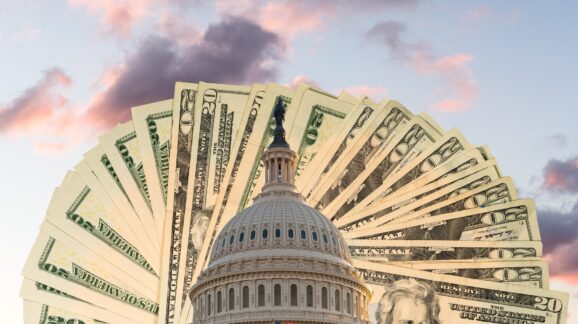Tackling Unmeasured Government Growth Must be Prioritized in the 118th Congress

Photo Credit: Getty
Fred L. Smith Jr., the founder of the Competitive Enterprise Institute, refers to the regulatory state as the least disciplined part of the federal enterprise. The federal government spends $6 trillion a year atop a $30 trillion national debt, with yearly deficits exceeding $1 trillion projected as far as the Congressional Budget Office’s eye can see. That ought to cause concern.
We can at least easily look up spending and the debt and grasp their magnitude, though not with the precision one might expect (we don’t even know how many agencies there are or how many programs they run).
But the burdens of the administrative state remain unfathomed. We do not know the full magnitude of the burdens inflicted by federal regulation covering health and safety, family and personal life, education, and so on, including the direct and indirect effects on the economy and GDP as a whole. We at CEI maintain a reckoning of around $2 trillion, but it is necessarily incomplete, with others deeming impacts well beyond that.
One cannot look those up the bulk of these costs of interventions anywhere on official books, although progressives are sure that benefits exceed costs and the unfathomability is nothing to worry about. The Biden administration has even drafted the Office of Management and Budget—until his administration the only body exercising restraint in the form of regulatory review—into the pursuit of “benefits.”
The magnitude of this issue is greater in the wake of the highly regulatory legislative programs enacted during the past three years, including the Families First Coronavirus Act, CARES Act, American Rescue Plan, Bipartisan Infrastructure Act, Bipartisan Innovation Act, and Inflation Act.
There is accounting of the spending, but not of the regulatory effects. These bills cover everything from computer chips and elective vehicle charging stations to tap water. Congress and spending watchdogs still fail to appreciate the extent to which modern federal spending is also regulatory.
A recent academic symposium on regulatory budgeting is a sign that the unknowns regarding the “hidden tax” of federal regulation are on some policy makers’ minds. The new Congress in 2023 can begin investigating the questions that need answers and create detailed reports and legislative proposals. There are unknowns that policy makers must first comprehend and then resolve on the path toward what some might refer to as regulatory budgeting.
For example, the Federal Register, the daily rules-and-regulations depository, is one of the only gauges for assessing regulatory burdens. Costly rules can be short, while piddling rules might take up a lot of space. Plus, the Register is filled with all sorts of material apart from rules. Guidance documents get left out.
While we can see that the Register is headed back toward Obama’s record-setting levels, we need more clarity. Some of the 118th Congress’ hearings should focus on ways to optimize the information the Federal Register presents about regulatory flows and burdens for public consumption.
Counting numbers of rules also conveys less than we’d want, even as those too are likely heading to the pre-Trump levels of the low-3,000s. As yet, these are not as high under Biden as one might expect give the legislative torrent of the past three years. That points to the broader paradox of a far-larger annual rules count back in the 1990s when the government was far smaller. Something appears to be slipping through the cracks; what might it be? That points to a need for greater curiosity about and emphasis on disclosure of guidance documents and their inclusion in the Register. Guidance documents are of such import that “emergency” legislation is needed to address them.
In previous decades, Congress has enacted legislation requiring assessments of costs of regulations, both in terms of the annual flow and in the aggregate. But, as it happens, federal agencies are not obeying the rules. This failure to abide by basic ground rules is a major problem of unmeasured government, and the 118th Congress needs to spend a substantial amount of time investigating and constructing legislative fixes for it.
The last fiscal year for which we have the required Office of Management and Budget (OMB) Report to Congress on regulatory benefits and costs is 2019, and even that one was years late. Like its predecessors, it covers a handful of the rules in play, yet claims net benefits for the entire regulatory enterprise. This report is required by the Regulatory Right-to-Know Act, but that requirement is often ignored. The Act also requires an aggregate, not merely annual, cost assessment, but that has not appeared since 2002.
There are plenty other matters to investigate, such as the best ways to optimize the twice-yearly Unified Agenda of Federal Regulatory and Deregulatory Actions to better account for agency regulatory plans, their sub-regulatory guidance, and deregulatory measures, as well as better reconciliation with the Federal Register and a resuscitated Report to Congress on regulatory costs.
The 118th Congress, in fulfillment of a pro-growth deregulatory agenda, can lay the groundwork for protecting the public from progressive extremism and alleged “expertise.” Without a change, the current path of untethered spending and unmeasured and uncontrolled regulatory centralization can relegate the United States to the status of “One Nation, Ungovernable.” As someone we all know might say, “C’mon, man!”